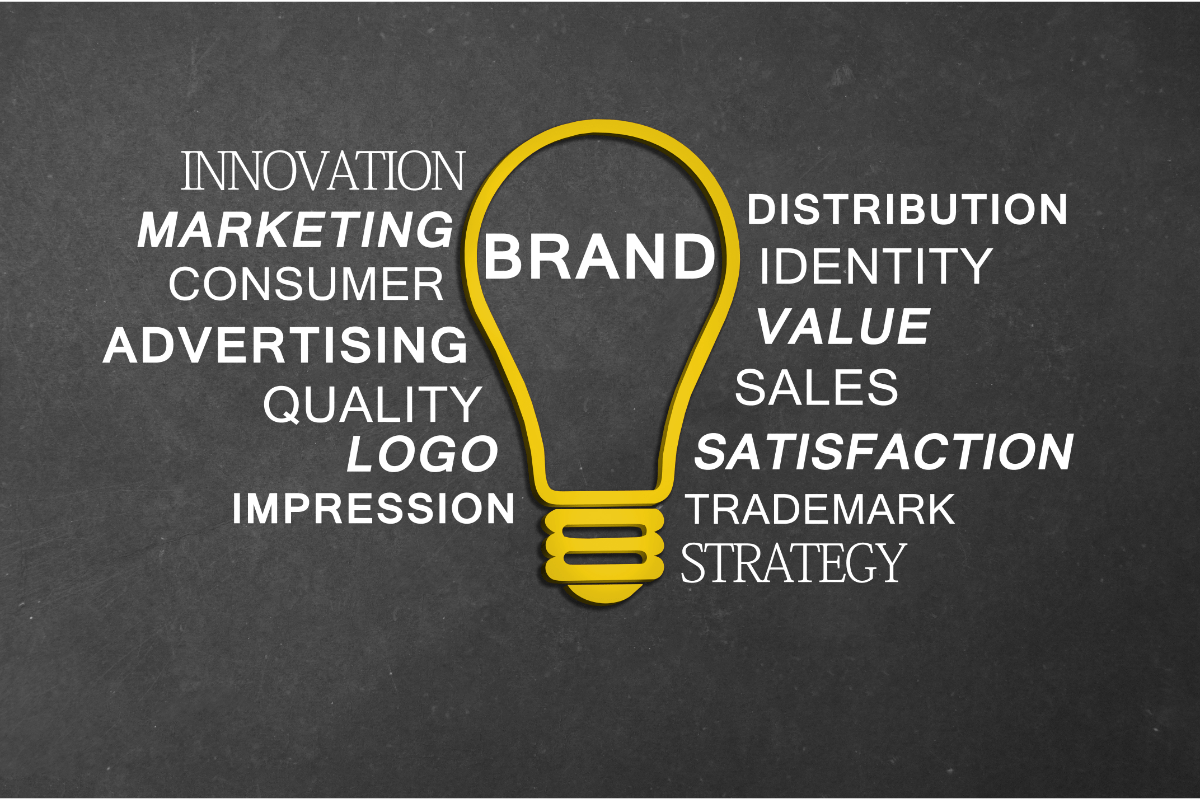Branding is more than just a logo or a slogan – it’s the foundation of a company’s reputation and identity. It’s how customers perceive your company and the values you stand for. It’s an essential yet underrated marketing strategy that projects the brand voice and the company’s core values.
That’s why developing a strong branding strategy is crucial for success in today’s crowded marketplace. Whether as a startup or a well-established business, this comprehensive guide will explore the different branding strategies, what a good branding strategy should look like, and how to choose the right one for your company.
Before we get into the details of what they are, it is important to note that adequate branding strategies can only be created by someone who understands the brand values and what the company stands to offer its customers.
So, let’s dive in and discover the power of a strong brand strategy!
What is brand strategy?
A brand strategy is essentially a plan for how you want your brand to be perceived by your target audience. It’s about answering questions like, “What does our brand stand for?” “What makes us different from our competitors?” and “How do we want customers to feel when interacting with our brand?”
Think of your brand strategy as a roadmap that guides your branding efforts. It sets the foundation for presenting your brand to the world – from your logo and website design to your advertising campaigns and customer service.
When creating your brand strategy, it’s important to be clear and intentional about what your brand represents, what makes you unique, and what kind of experience you want to provide for your customers. This way, your branding efforts are consistent and aligned, and you’re more likely to achieve your desired outcomes of drawing in potential customers.
And trust me, developing a solid brand strategy is crucial! It helps you build brand awareness, establish credibility, and create loyal customers. So, if you’re serious about building a strong and successful brand, then developing a good brand strategy is a must!
Branding vs. brand identity vs. brand:
Understanding the difference between branding, brand identity, and brand is important. While they are related, they refer to different aspects of a company’s overall image and reputation.
Branding is the overarching strategy and the approach a company takes to create a unique name and image for itself in the minds of consumers. It is about creating a consistent message and experience for customers, regardless of the company’s products or services.
On the other hand, brand identity is the visual and tangible elements associated with a brand, such as its logo, color scheme, typography, packaging, and design style. These elements work together to create a consistent and recognizable image for a brand.
Finally, the brand refers to consumers’ overall perception of a company, product, or service. This includes their emotions, beliefs, experiences, and expectations about a brand.
The brand is the sum total of a company’s efforts to create a unique and memorable image in the minds of consumers.
Why is developing a branding strategy important?

Developing a strong branding strategy is essential for any company that wants to succeed in today’s competitive market.
A well-executed branding strategy can help a company differentiate itself from its competitors, establish a unique identity, and build a lasting impression in the minds of consumers.
A strong brand can improve brand recognition, build brand loyalty, and ultimately drive sales and revenue. Customers are more likely to choose a brand they trust and recognize over a brand they have never heard of before.
And once a customer has a positive experience with a brand, they are more likely to become repeat customers and recommend the brand to others.
Elements of a strong brand strategy:

A strong brand strategy is built on several key elements, including:
Brand vision and mission: The brand vision and mission provide a clear direction for a company’s branding efforts. The brand vision outlines the company’s long-term goals and aspirations, while the brand mission defines its purpose and values.
Together, they help guide the development of a consistent and meaningful brand experience for customers.
Target audience: Understanding the target audience is crucial to developing a successful brand strategy. Companies must clearly understand who their customers are, what they need and want, and what motivates them to purchase. This information creates a brand that resonates with customers and meets their needs.
Unique value proposition: A unique value proposition (UVP) is a statement that defines what sets a brand apart from its competitors and what benefits it offers to its target audience. The UVP should be unique, meaningful, and relevant to the target market.
It helps a brand stand out and appeal to customers in a crowded market.
Brand personality: A brand personality refers to the traits and characteristics associated with a brand. Just like people, brands can have a personality, such as being friendly, adventurous, or trustworthy.
The brand personality should be consistent with the brand vision and mission and appeal to the target audience.
Brand messaging: Brand messaging includes the words, phrases, and slogans used to communicate with its target audience. Consistent and compelling brand messaging helps to reinforce the brand’s identity and build an emotional connection with customers.
Brand visual identity: The brand visual identity includes elements such as logo, color palette, typography, and design style. These elements should be consistent and recognizable across all of a brand’s marketing materials, from its website to its packaging.
Types of brand strategies:
There are many different types of branding strategies that companies and individuals can choose from, depending on their goals, target audience, and unique value proposition. Two of the most common types with examples of branding are Personal Branding and Corporate Branding.
Personal branding

Personal branding is a type of branding strategy that focuses on the individual rather than the company as a whole. This approach is often used by entrepreneurs, public figures, and influencers who want to build a strong personal reputation and establish themselves as thought leaders in their field.
Think of Oprah Winfrey, for instance. She’s built a powerful personal brand that spans talk shows, book clubs, and philanthropy.
People instantly associate her with positivity, wisdom, and giving when they hear her name. That’s the essence of a successful personal brand – being known for who you are, what you stand for, and the impact you’re making in your industry.
Importance of Personal Branding
One of the major benefits of personal branding to an individual is that it helps control the public’s perception and narrative about you. In that way, such a person can influence the public’s opinion of them, and they can put themselves in the best positive light possible.
Another importance of personal branding is that it helps you be unique and stand out from the competition. In a world like this, where almost everyone has the same advantage and is open to the same opportunities, only effective personal branding strategies can make you stand out from the rest of your competitors.
Today’s digital space is very crowded, and personal branding helps you and your business, by extension, to stand out and be memorable in the minds of both your potential and existing customers.
Even though it is well different from corporate branding, personal branding can help to create a strong brand identity for your business. A good personal brand exists to pitch you to your potential clients, projecting why you are the best for the job.
Corporate Branding

As opposed to promoting the individual, corporate branding is all about promoting a corporate entity’s brand name and values. Corporate branding is simply the identity and image of the company and how it is presented to the clients through various distribution channels.
It involves using the company’s brand name and its values to create a unique and distinguishing identity for the company in the client’s mind. A good example is a corporate brand like Nike, which is popularly associated with sport wears and athlete ambassadors, as is evident on all their social media platforms.
Importance of Corporate Branding
With a strong corporate identity and brand name, a corporate brand has a competitive advantage when selling its products and services.
It facilitates the launch of a new product or service and helps in the acceptability of consumers. The strong corporate branding strategies that have been implemented would help make it easier for the company to tap into new markets and products, as people are more likely to patronize if it is from a popular and trusted brand. A vital aspect of understanding branding is leveraging the question of Brand Loyalty raised in the clients’ minds.
Other types of branding strategies include:
Rebranding

Rebranding is the process of changing the image and reputation of a brand, often in response to changes in the market or the company’s goals. This can include updates to the brand identity, brand messaging, and brand personality.
Rebranding is often necessary when a company wants to reposition itself or appeal to a new target audience.
For example, Airbnb rebranded in 2014, updating its logo and visual identity to better reflect its mission of creating a sense of belonging for travellers.
Heritage branding

Heritage branding involves tapping into your company’s past to create a powerful brand image for the present and future. It’s about showcasing your history, traditions, and quality products that have been the hallmark of your company for years.
Take Rolex, for example. They’ve leveraged their heritage to create a strong and prestigious brand image synonymous with quality and luxury. When you think of Rolex, you think of a brand that’s been around for generations and has a long history of producing top-notch products.
That’s the power of heritage branding – using your company’s history and traditions to build a brand that’s trusted, respected, and remembered.
Lifestyle branding

Lifestyle branding is a type of branding strategy that associates a brand with a particular lifestyle or set of values. This approach is often used by companies that sell products or services that are associated with a specific lifestyle, such as outdoor gear or wellness products.
For example, Patagonia is a company that uses a lifestyle branding strategy, positioning itself as a brand that supports environmental activism and outdoor adventure.
Co-branding

Co-branding is all about teaming up with another company to create something even greater. You can leverage each other’s strengths and reach new audiences by combining your brand with another. It’s a win-win for both companies involved.
Just look at Coca-Cola and McDonald’s. They’ve co-branded for years, offering Coca-Cola products worldwide at McDonald’s restaurants. It’s a perfect example of how co-branding can bring two companies together to create something bigger and better.
So, if you’re looking for a way to reach new audiences and grow your brand, co-branding might just be the way to go!
Niche branding

Niche branding is a type of branding strategy that focuses on a specific niche market or subculture. This approach is often used by companies that offer products or services that appeal to a narrow population segment, such as organic food products or eco-friendly products.
For example, Whole Foods is a company that uses a niche branding strategy, targeting consumers who are interested in natural and organic food products.
Retail branding:
Retail branding is about making customers feel good when they shop in-store. It’s about creating an experience they won’t forget and one that sets them apart from the competition.
Think about Apple, for example. They’ve built a strong retail brand by designing their stores to be stylish and minimalist, focusing on offering customers a hands-on experience with their products.
And the best part? The stores are welcoming and accessible, making it easy for customers to try out products and get help from knowledgeable staff.
It all adds up to a memorable and enjoyable shopping experience that customers are sure to love. Retail branding helps to create shopping experiences that are so good customers will want to keep coming back.
Online branding:
Online branding is all about creating a seamless and memorable experience for customers in the digital world. This means paying attention to the details of your online presence, from your website design to the product descriptions you offer.
By doing so, you’re setting yourself apart from the competition and making it easy for customers to engage with your brand.
Take Amazon, for example. They have built a strong online brand by focusing on what customers want – a vast selection of products, fast shipping, and easy returns. And it shows in their website design, which is user-friendly and easy to navigate.
Customers can find what they’re looking for and make a purchase with ease, leading to a positive and memorable online experience. That’s the essence of online branding – making it easy for customers to engage with your brand and create a lasting impression.
Offline branding:
Offline branding is all about creating a unique and memorable experience for customers outside of the online world. This means paying attention to the little things, like how your product is packaged or how your brick-and-mortar store is designed.
That way, you’re setting yourself apart from the competition and making a lasting impression on customers.
Take a small coffee shop, for instance. By using a distinctive logo, color scheme, and font on their menu and packaging, they are already creating a sense of brand identity. But it doesn’t stop there.
They have also created a warm and inviting atmosphere with cozy seating, vintage decor, and just the right background music. All these elements come together to offer customers a memorable and enjoyable experience they won’t forget. All these are results of a good offline branding.
And when customers have a positive experience, they are more likely to become loyal and spread the word about the brand. That’s the power of offline branding!
Cultural and Geographic Branding
Although they are similar, cultural and geographic branding have slightly different functions. They are different types of branding strategies that share a similar style.
Geographic branding on one hand refers to the branding of particular regions, cities, states, and even entire nations. It is mainly used to promote tourism and economic development. A typical example of geographic branding at work is how the Eiffel Tower serves as a symbol or representation of Paris.
Cultural branding, on the other hand, is all about promoting the culture of a particular place. As opposed to how geographic branding uses the images or landmarks of a location, cultural branding tends more towards the cultural qualities of the environment.
Cultural branding markets the company brand by appealing to the lifestyle of the target audience.
In conclusion, there are many different types of branding strategies that companies can choose from, and the best strategy for a particular company will depend on its goals, target audience, and unique value proposition.
By developing a strong brand strategy, companies can differentiate themselves from their competitors, establish a strong brand image, and build a loyal customer base.
Now that you’re familiar with the different branding strategies, it’s time to take the next step in building a strong brand for your business. Check out our branding guide, which will provide you with the basics of branding as you develop the perfect branding strategy for your company.
Don’t miss this opportunity to make your brand stand out from the competition and connect with your target audience. Sign up for our free new business pack and start your journey toward a powerful brand presence!






